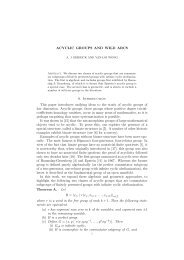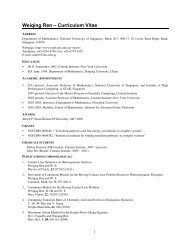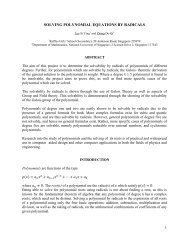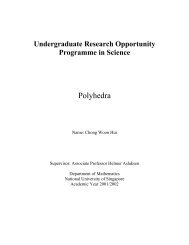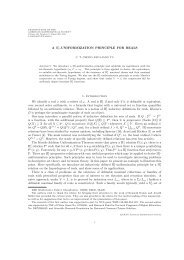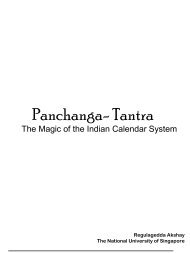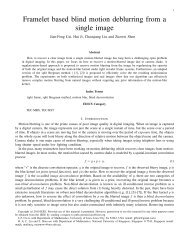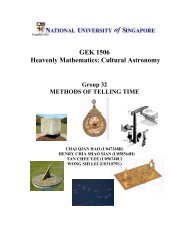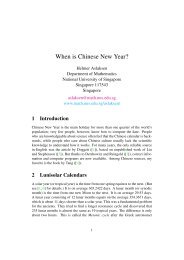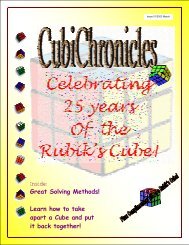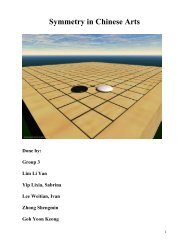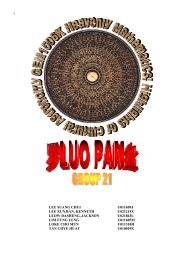The Mathematics of the Longitude - Department of Mathematics
The Mathematics of the Longitude - Department of Mathematics
The Mathematics of the Longitude - Department of Mathematics
Create successful ePaper yourself
Turn your PDF publications into a flip-book with our unique Google optimized e-Paper software.
Chapter 5<br />
How to Measure <strong>the</strong> Altitude <strong>of</strong> a<br />
Celestial Body<br />
5.1 Introduction<br />
<strong>The</strong><br />
astrolabe invented by <strong>the</strong> Greeks was <strong>the</strong> first instrument used to<br />
measure altitude <strong>of</strong> a celestial body. <strong>The</strong> astrolabe was mostly used in <strong>the</strong><br />
Medieval Ages and by <strong>the</strong> Islamic world. However, it was cumbersome<br />
because it had to be suspended and <strong>of</strong>ten produced large, unavoidable<br />
errors in rough wea<strong>the</strong>r.<br />
Figure 5.1 A man using <strong>the</strong><br />
astrolabe.<br />
<strong>The</strong><br />
development <strong>of</strong> <strong>the</strong> cross-staff supplanted <strong>the</strong> use <strong>of</strong> <strong>the</strong> astrolabe. <strong>The</strong><br />
cross-staff consisted <strong>of</strong> a long piece <strong>of</strong> wood with a crosspiece that could<br />
slide along <strong>the</strong> staff. <strong>The</strong> navigator would sight a celestial body along <strong>the</strong><br />
top <strong>of</strong> <strong>the</strong> crosspiece and move it so that <strong>the</strong> bottom tip met <strong>the</strong> horizon.<br />
Navigators <strong>of</strong>ten used <strong>the</strong> sun as a sight, and <strong>the</strong> cross-staff <strong>of</strong>ten caused<br />
eye damage for longtime navigators.



